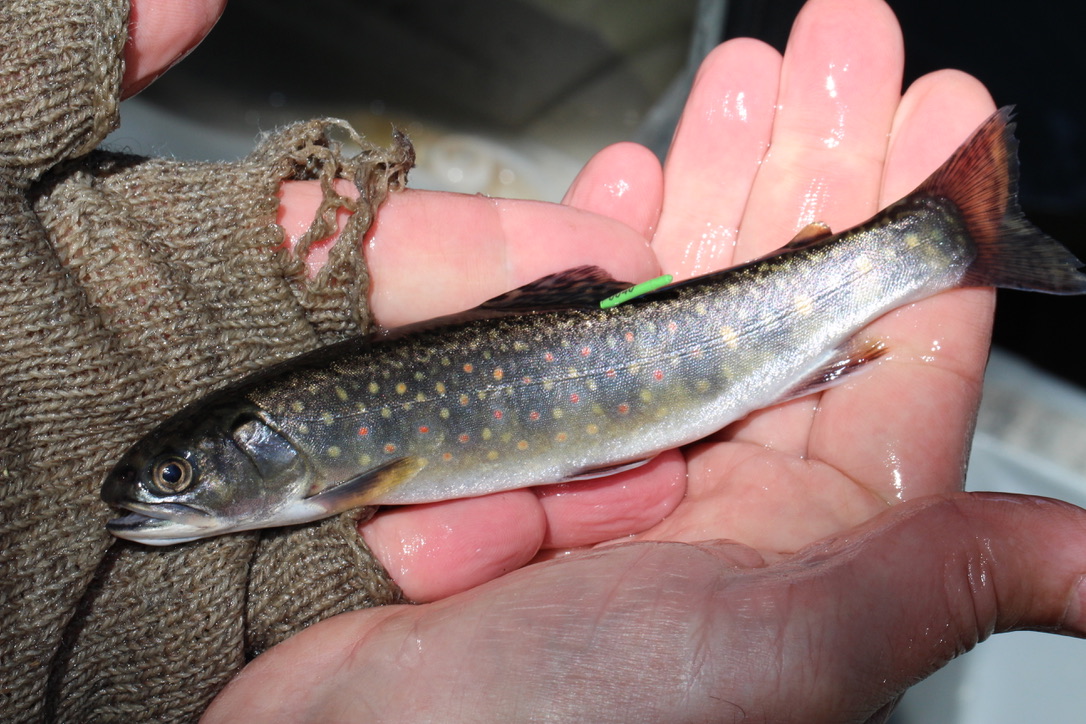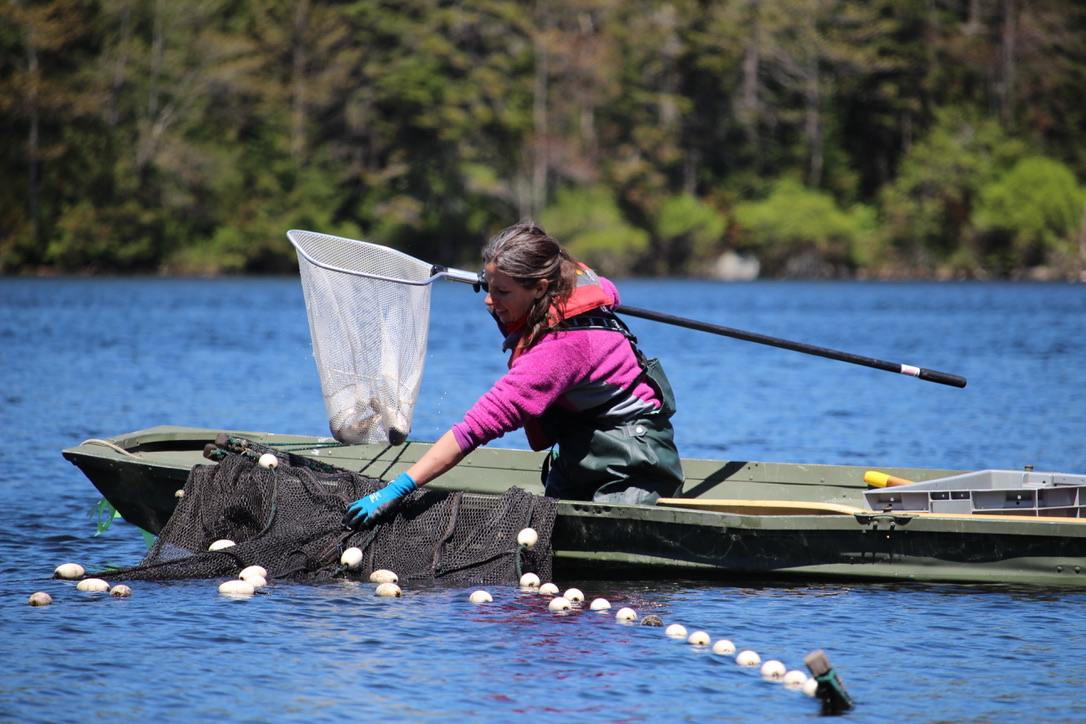Genetics tip the scales for trout in a warming world
As global temperatures rise, animals’ abilities to adapt may be hardwired in their DNA
Genetic variation across a species’ range means that subtle differences, even those spread across hundreds or thousands of miles, may have big implications for how well discrete populations weather change.
A new study in Nature Communications details how genetic variation across the native range of brook trout may help some trout populations endure rising temperatures better than others. These findings demonstrate how local adaptations could hold important keys for species survival, including how they could used to help bolster the resilience of at-risk populations through well-informed conservation strategies.

Conservation biologist Mariah Meek, a professor at Michigan State University and lead author on the study, explains that such layered insights help scientists understand how different populations of the same species could respond to climate change in unique ways. Populations of organisms can develop specific adaptations to the conditions they’re exposed to over time. In brook trout, adaptations to conditions like rainfall, humidity and temperature can be written into their DNA. But the brook trout’s native range spans thousands of miles—and across that range, different groups occupy varied bodies of water, from deep lakes to streams—and experience stark differences in conditions like temperature and rainfall.
By comparing how different populations' traits were shaped by local environmental conditions against climate models, researchers are able to identify their ability to adapt to changing conditions on a local scale and identify which populations are most at-risk.
“This project is among the first to connect molecular responses to temperature increases with genetic diversity across a species' range — showing, in detail, how localized genetic variation may make some populations of a species more resilient in the face of climate change,” Meek said.
Researchers examined 201 individual trout collected from 82 sites across the species’ native range: an expanse ranging from northern Georgia to northern Quebec. They found that a subset of genes, about 5% of the genetic diversity between populations, were shaped by climatic conditions, like annual humidity, temperature and precipitation.
They then compared these tolerances with climate prediction models, identifying not only populations at elevated risk from changing conditions, such as wide fluctuations in temperature, or high sustained temperatures, but also those who may be strong candidates for targeted conservation practices.
"These results highlight the genomic distinction of brook trout at the northern and southern ends of the native range, which is largely driven by climate adaptation."
– Meek, et. al, 2025

Populations in the far-south reaches of the species' range, in the southern Appalachians,
are at elevated risk from climate change. A projected 92% decrease in brook trout
habitat poses a cataclysmic threat to southern populations.
The potential impacts of such losses are not constrained to the populations that live
along the southern edge of the range, however.
While these populations are at the most immediate risk due to their limited adaptive
potential, their acclimation to comparatively high temperatures could be a boon for
norther populations, which are adapted to larger temperature swings, but lack tolerance
to high temperatures.
These trout offer a viable genetic resource to help bolster heat tolerance in more
northern populations. Southern populations act as a valuable reserve of genes for
conservationists to draw upon in future genetics-based conservation strategies.
Across climate models, temperatures in more northern regions will continue to climb. In the more modest models, southern populations are at elevated risk among all trout populations. In more severe models, the adaptive potential of trout populations are diminished across their range; meaning that a the authors explain that interventions will be needed to protect the trout living in northern waterways, and that genetics-based approaches, such as translocations and assited gene flow, mey be necessary for protecting populations. In order to do so, they note that southern populations must fdirst be protected through traditional conservation means.
"This analysis shows that populations of brook trout at the southern end of the native range are at greatest risk of lacking genomic variation needed to withstand future warming at their current location, even under modest projections of climate change."
– Meek et. al, 2025
These insights, gained by combining climate modeling, genomic analyses, and experimentation provide high-resolution guidance for both short-term and long-term conservation efforts.
Understanding how variations within a species seed increased resilience allows conservation strategies — such as captive breeding and reintroduction programs — to be tailored for each population, rather than relying on one-size-fits-all solutions. Conservationists can use this knowledge to introduce traits from heat-tolerant trout into less tolerant populations. This approach is particularly helpful for species whose native range spans a wide array of environmental conditions, like brook trout.
Targeted conservation interventions, such as assisted gene flow — where desirable variation and the resulting traits are introduced into a breeding population — can leverage population traits in well-adapted groups to help support more vulnerable ones. This could allow for the genes that allow some trout to be more heat-tolerant to be introduced into more susceptible populations. Assisted gene flow experiments are being tested in other species at-risk from climate change, including the coral colonies that compose the Great Barrier Reef.
“This connects genetics to climate change in a real-world way," explained Meek. "It allows us to understand how animals might adapt—or not—based on their DNA, and provides potential solutions."
- Categories: